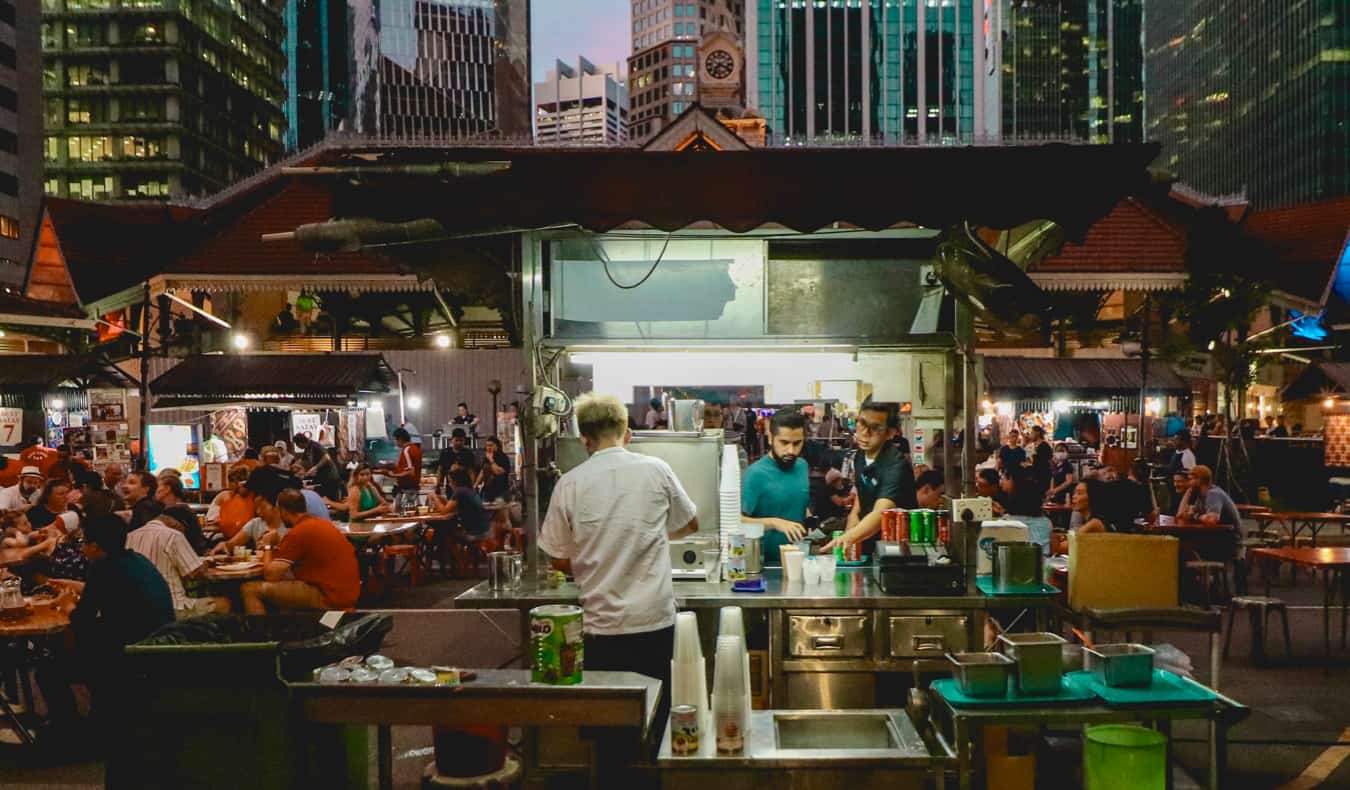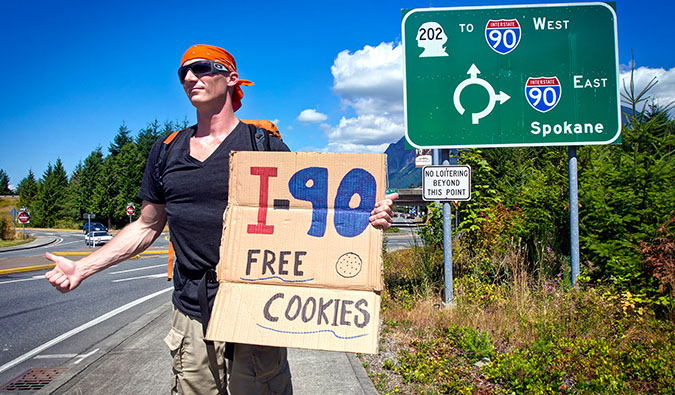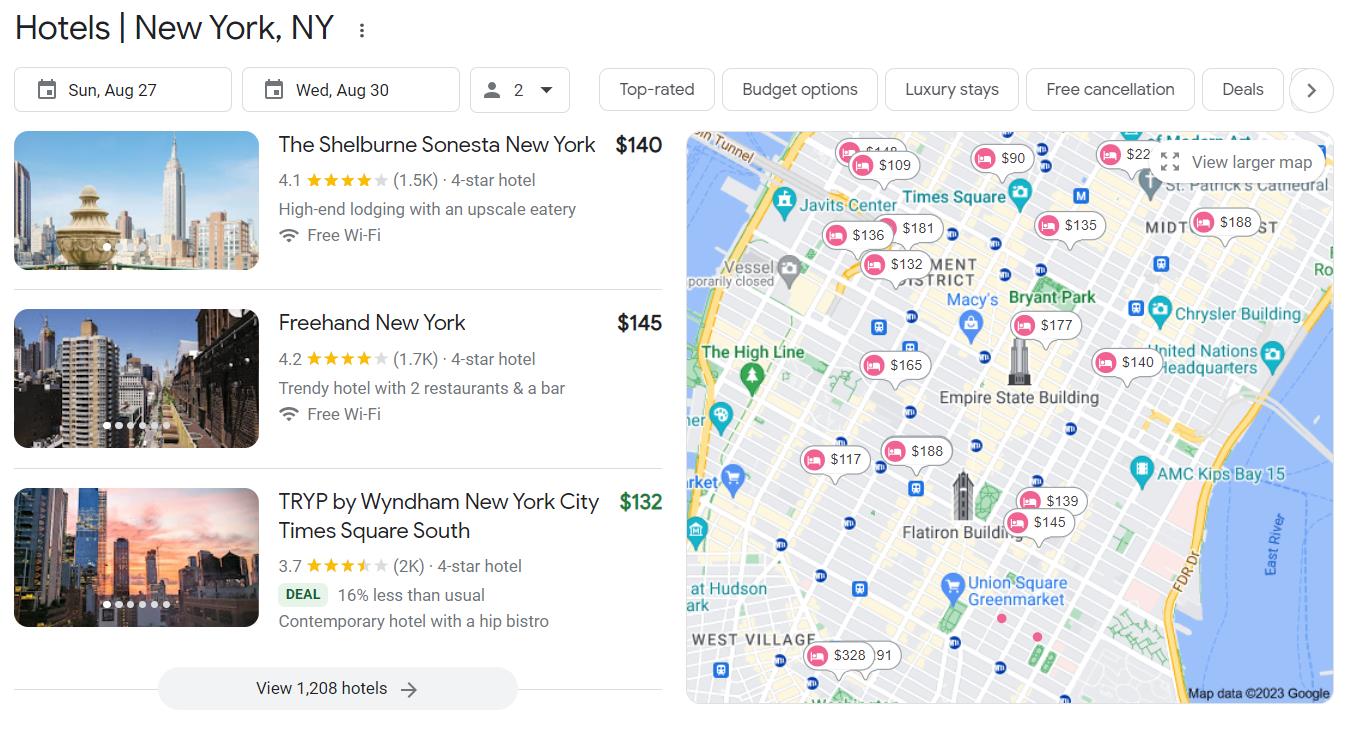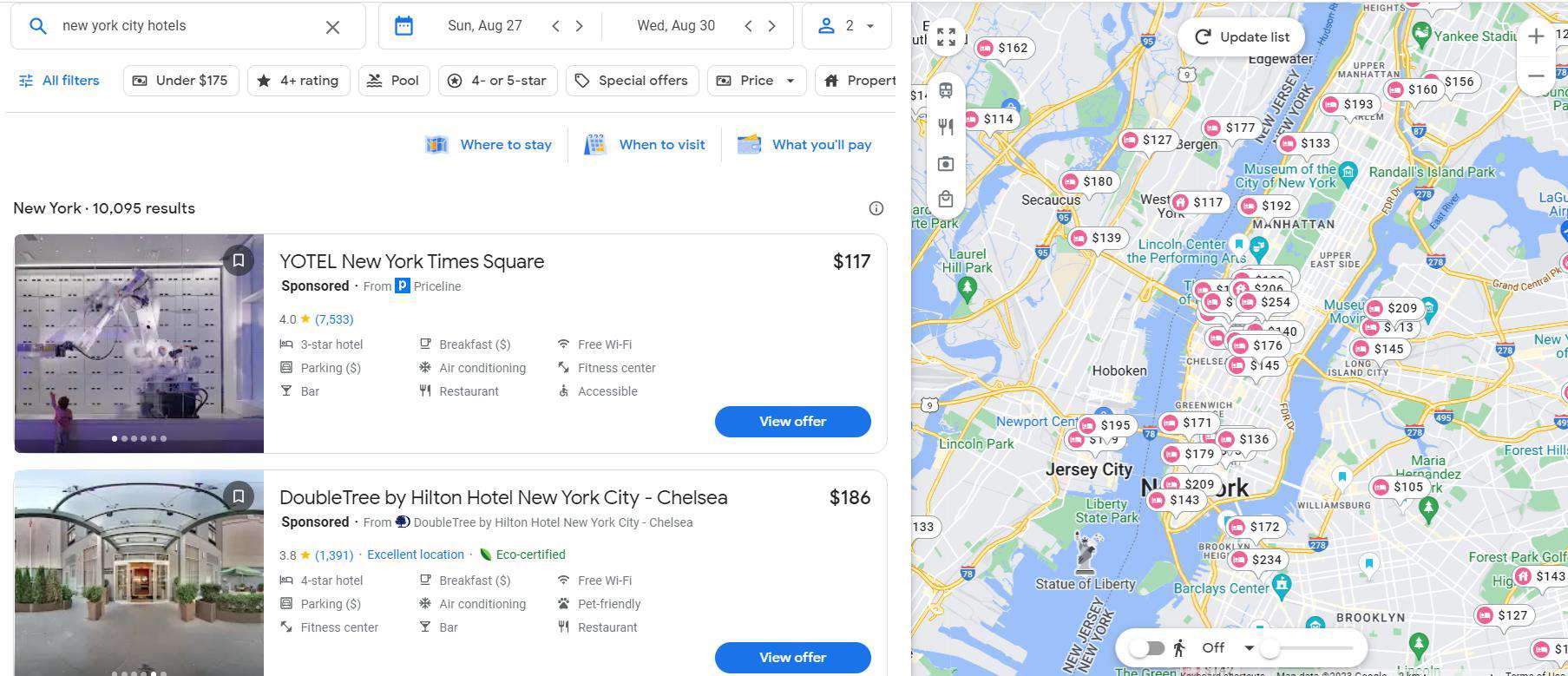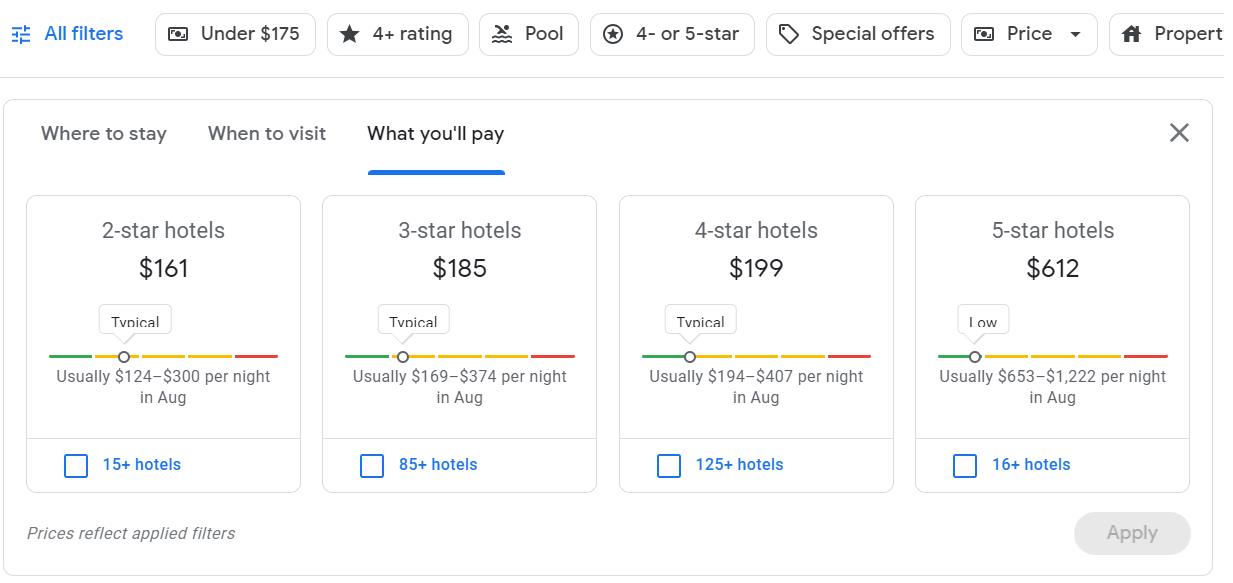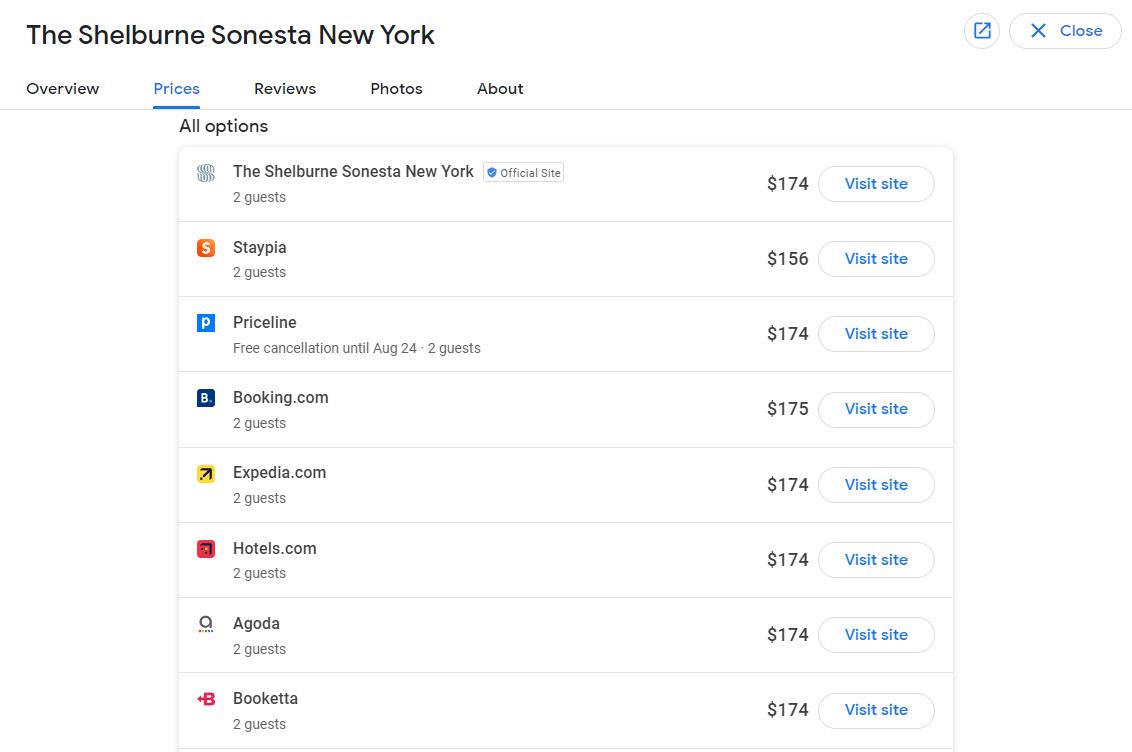
I love to eat.
In fact, eating is one of my favorite activities, and also one of my favorite aspects of traveling.
Food is such an integral part of so many cultures that to skip out on meals when you travel is to miss out on a part of the travel experience.
I’m always disappointed when I meet travelers who cook all their meals in a hostel kitchen or spend so much of their time just getting food at grocery stores.
I mean, don’t get me wrong, grocery stores and markets teach you a lot about a place. And you don’t need to eat out for every meal.
But why come to Italy to cook pasta in your hostel? Or skip a sushi dinner in Japan or paella in Spain?
Of course, eating out all the time is expensive. Imagine if you ate out every day while at home — your food budget would be astronomical! And, when you are traveling long term (or just on a tight budget), you have to think about making your money last.
Additionally, many people have dietary concerns that prevent them from fully embracing new foods. And many travelers are vegan or vegetarian, as well, which might impact their options.
To make sure I can eat out without breaking the bank, I have had to learn how to balance eating 99% of my meals out while still finding a way to save money. Here’s how to eat out on a budget while you travel the world:
1. Follow the Five Block Rule
I live by what I call The Five Block Rule. I don’t eat within five blocks of a major tourist attraction or area. I simply walk in any direction and search for a place to eat when I hit five blocks. There’s an invisible line at this area: tourists don’t go past it. All of a sudden you notice that the crowds are gone, and that’s when you want to start looking.
Sure, you might find a good meal in a tourist area, but you’ll find a better, cheaper meal outside it. Go where the menus aren’t in multiple languages. Go to those little tiny hole in the wall places that you are unsure about. The meal might not knock your socks off each time but it will be a memorable and more local experience.
2. Use Local Knowledge
If you are unsure of where to eat (and don’t like the idea of randomly wandering into restaurants), try apps where locals post reviews. I use them often to find recommendations for food in the cities and towns I visit. You can also ask the tourist office or the staff at your hostel/hotel or taxi drivers, who tend to eat at cheaper food stalls. They will have good recommendations. After all, local workers aren’t going to eat in the tourist area!
My two favorite apps are Yelp and The Fork. For vegan and vegetarian recommendations, check out Happy Cow.
3. Ask The Right Question
Be sure to ask locals the question, “Where do you eat?” not “Where should I eat?” If you ask people the second question, most people will think to send you to the popular restaurants tourists visit because that will be what comes to mind. They’ll think, “Hmmm where do visitors go eat? What’s popular in town?”
However, by asking where they eat, you will get recommendations for more local restaurants because they will tell you all the hole in the wall spots they eat at on a day-to-day basis. Small word change, much better results.
4. Eat Street Food

In most places around the world (and especially in Asia), the streets are lined with little food stalls and areas where food is cooked openly on the street. You grab a plate, sit down in a little plastic chair, and enjoy a delicious meal. Street food is some of the best food in the world. Meals at street stalls and vendors cost just a few dollars (if that) most of the time and are a great way to really experience the local cuisine.
While in Sweden, I lived off these types of vendors. In Amsterdam, FEBO and their croquettes kept my stomach full. In Costa Rica, the empanada seller filled me up for a dollar and I bought local food from vendors at markets for mere pennies in Madagascar.
Many places, like Thailand and Vietnam, for example, wouldn’t be the same if the street food disappeared. (And yes, it’s safe. The locals wouldn’t eat it otherwise.)
5. Eat Fast Food (Sometimes)
Fast food isn’t the best food, but it is another option if you want a cheap meal in inexpensive parts of the world. For as little as $5 USD (more in expensive countries like Norway, home of the $13 Whopper), you can get a filling (and hugely caloric) meal.
Sure, it’s not the greatest food, and I am going to skip the philosophical debate about traveling around the world only to eat McDonald’s to say that it’s cheap and just another way to help you rein in your spending.
6. Stick to Local Ingredients
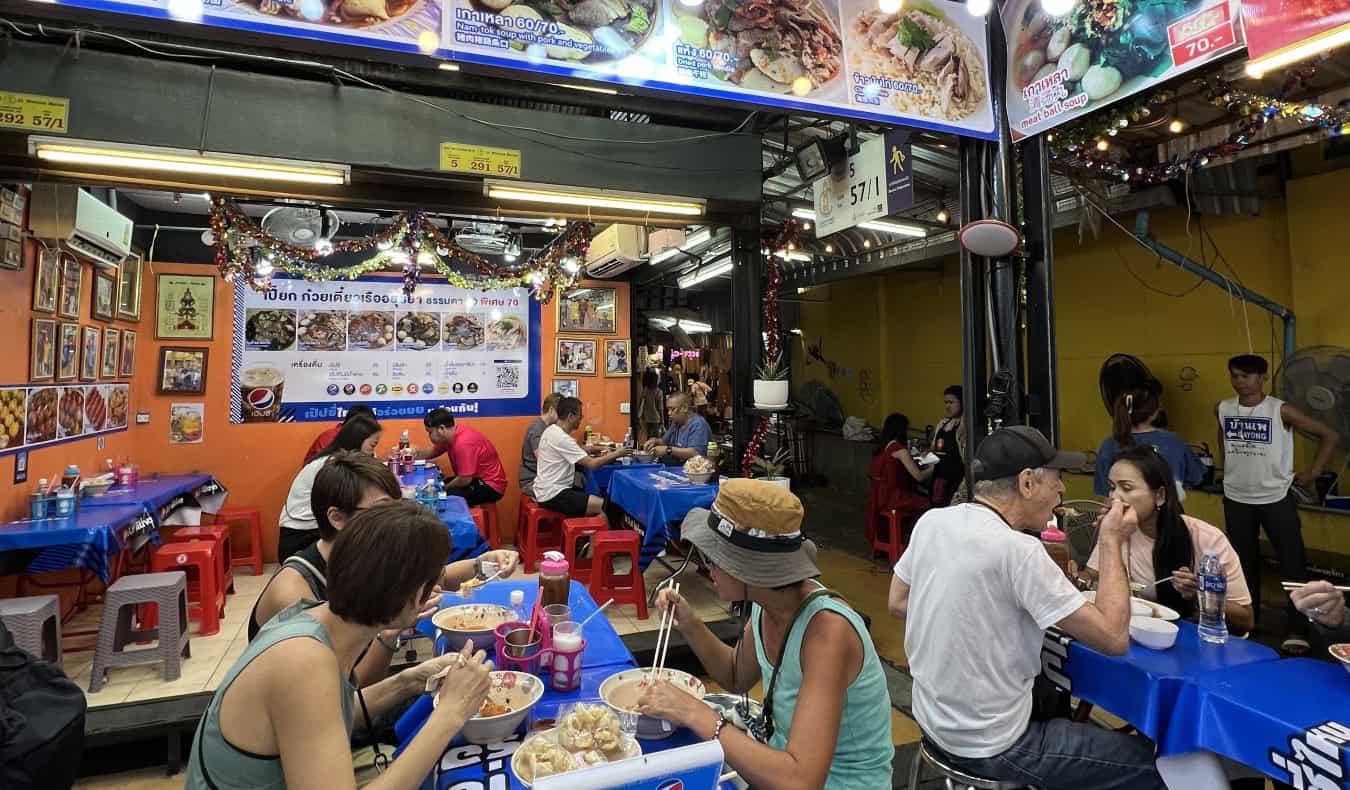
When you’ve been traveling for a while, it’s only normal to crave a taste of home every now and then. That means that sure, sometimes I get sick of Greek food when I’ve been traveling there for a bit. Other times, I can’t eat any more Thai food and just want a burger. And that’s OK.
However, non-local food is almost always more expensive than local cuisine. For example, in Vietnam, a bowl of pho is less than a dollar, but a burger is about three times as much (or more!). Try to stick to the local cuisine as much as possible and also try to avoid any food that is imported as that will increase the price of your meal too!
7. Find the Lunch Specials
Many restaurants, especially in Europe, offer lunch specials, where items on the dinner menu are offered at a huge discount. You can get an amazing afternoon meal for a fraction of the cost you’d pay for the same meal in the evening.
I usually tend to eat my “nice” meal during lunch, because lunch specials and plates of the day are about 30–40% off what I might pay at dinner. The options will usually be more limited, but the savings more than justify it.
Sadly, there is no one website where you can find all the restaurants in the world that offer lunch specials. They vary from city to city and region to region. What you can do other than wander aimlessly around the city in hopes of finding a place (though I have done that) is to ask the tourist office or the staff at your hostel/hotel if they know where to find lunch specials. They are usually very aware of what places have specials.
8. Bring a Refillable Water Bottle
As you walk around and sightsee, you need to stay hydrated. But buying a bottle of water every day is not only environmentally wasteful, it also makes foolish budget travel sense. Carry a refillable bottle of water (with a filter) with you instead and just use the tap water. I suggest a Lifestraw bottle. It ensures your water is always clean and safe — even if the tap water isn’t.
9. Cook 50% of Your Meals
I don’t cook a lot on the road as I don’t like hostel kitchens. They never have everything I need, and I hate traveling with a portable kitchen so I can have all the ingredients I want. Yet when I am in one place for a while (or if I’m Couchsurfing), I cook a few meals.
Cooking is one of the best ways to keep your travel costs down, and supermarkets are also great places to go see what the local people eat. The only place where cooking your own meals isn’t the most economical option is Asia, where street food is usually cheaper.
As I mentioned, I’ll often go out for a nicer meal at lunch when I can find a good deal. That will usually mean for dinner I’ll be cooking my own food. That way, I’ll still get to try the local cuisine but I’ll also get to keep my budget intact. Double win!
10. Have a Picnic

Another good option is to picnic. This is something I do a lot for lunch if I’m somewhere where the weather is nice. I usually head to a local food market, pick up a bunch of food, and go picnic in the park. Not only am I saving money (sandwiches aren’t expensive), but it affords me a good chance to watch the locals scurry about their daily lives.
If you’re staying at a hostel, this is a great ice-breaker for meeting new people. Just invite everyone along to join you and you’ll be making new friends in no time!
11. Use Tourism Cards
Most people think of tourist cards like the iAmsterdam card or the Oslo Pass as just a way to save money on transportation and attractions. But these cards also offer discounts at many restaurants. Typically, discounts are around 15–25%, but sometimes lunch specials can be up to 50% off.
Visit the local tourism office when you arrive and ask what food discounts are included. Chances are you’ll be able to save even more money if you just take the time to learn about the tourism pass. It’s a worthwhile investment!
12. Get Free Breakfast

If you can find hostels or hotels that include breakfast, you’ve already eliminated the cost of one meal. Plus, if you have a huge breakfast that fills you up for most of the day then you don’t need to eat as many meals out. Moreover, many hostels around the world also offer free dinners, free coffee and tea, and other food-related perks. Search them out to save money and lower your food costs.
13. Eat Where the Students Do
Where there are universities, there are students, and since students are usually broke, that means there are likely cheap places to eat nearby. Check Google Maps for local post-secondary institutions and see what you can find in the nearby area. Many bars in the area will likely have cheap drinks and happy hours too, so you can save even more.
Additionally, use Google to search for places. Type in “Student friendly restaurants in [X]” to get lots of suggestions on where to eat. You can also ask your hotel/hostel for information too.
14. Use Supermarket Deals
In many countries, supermarkets offer lunchtime specials for workers in the surrounding areas. These usually entail fresh sandwiches or some soup or salads. Additionally, many supermarkets also discount food that expires soon, including bread, baked goods, meat, and produce. For example, pre-made meals in Japan are often 50% off right before the grocery store closes because they can’t keep it overnight. Tight food laws in Scandinavia also mean that food that has “expired” is discounted too. (And, since food, especially imported meats, are so expensive in those countries, most locals buy the “expired” food).
Buy groceries in the evening and you can likely find yourself some discounted (but still totally safe and edible) food.
But, by using the tips above, I can afford to keep my costs down while still being able to afford a quality meal every so often.
And that’s what is really important — finding the right balance.
Because if you can manage to balance eating great food with saving money, both your wallet and your stomach will thank you.
How to Travel the World on $75 a Day
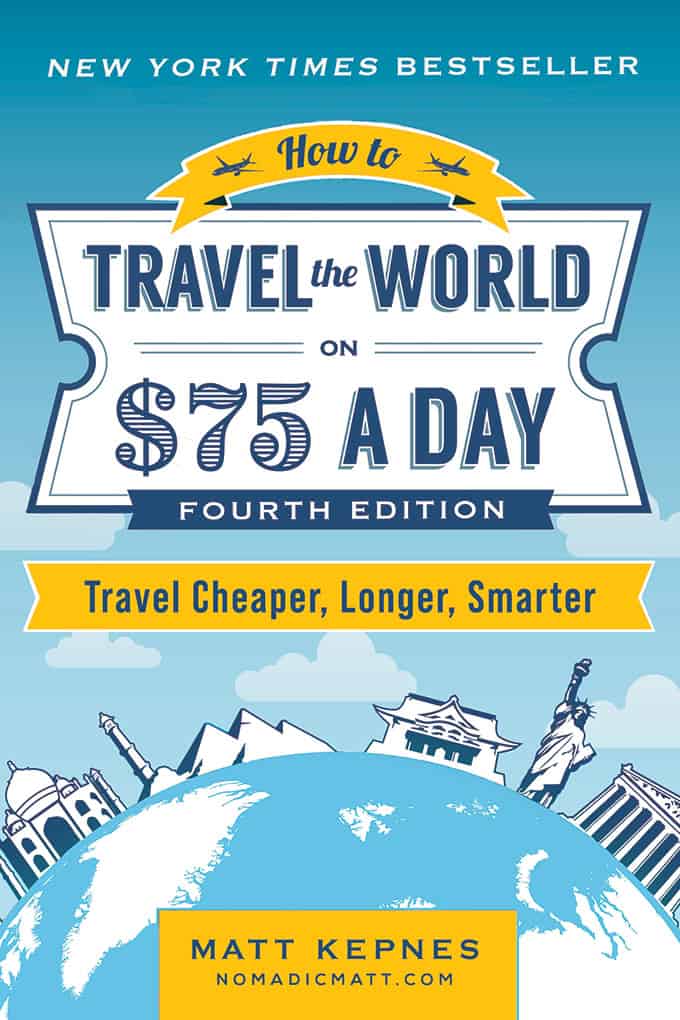
My New York Times best-selling book to travel will teach you how to master the art of travel so that you’ll get off save money, always find deals, and have a deeper travel experience. It’s your A to Z planning guide that the BBC called the “bible for budget travelers.”
Book Your Trip: Logistical Tips and Tricks
Book Your Flight
Find a cheap flight by using Skyscanner. It’s my favorite search engine because it searches websites and airlines around the globe so you always know no stone is being left unturned.
Book Your Accommodation
You can book your hostel with Hostelworld. If you want to stay somewhere other than a hostel, use Booking.com as it consistently returns the cheapest rates for guesthouses and hotels.
Don’t Forget Travel Insurance
Travel insurance will protect you against illness, injury, theft, and cancellations. It’s comprehensive protection in case anything goes wrong. I never go on a trip without it as I’ve had to use it many times in the past. My favorite companies that offer the best service and value are:
Want to Travel for Free?
Travel credit cards allow you to earn points that can be redeemed for free flights and accommodation — all without any extra spending. Check out my guide to picking the right card and my current favorites to get started and see the latest best deals.
Need a Rental Car?
Discover Cars is a budget-friendly international car rental website. No matter where you’re headed, they’ll be able to find the best — and cheapest — rental for your trip!
Need Help Finding Activities for Your Trip?
Get Your Guide is a huge online marketplace where you can find cool walking tours, fun excursions, skip-the-line tickets, private guides, and more.
Ready to Book Your Trip?
Check out my resource page for the best companies to use when you travel. I list all the ones I use when I travel. They are the best in class and you can’t go wrong using them on your trip.
